Macromite has been more than a bit of a slacker this last year or so, both scientifically (only one paper published – a record low) and in social media. I blame the latter on Facebook which has eaten all my social media impulses and regurgitated them into several-weekly postings on the fauna and flora accessible to my point-and-shoot camera. Alas, that does not include mites.
Also, I now live in the near outback: far from microscopes and internet access. My modem connection is both slow, expensive and unreliable and not conducive to rambling on about mites. That is a drag, but sometimes late at night the bandwidth is accessible and I am not asleep and that is true this post-ANZAC Day. Ergo, I would like to make a point about moulting in Mesostigmata that I don’t think I have ever published: Mesostigmata moult forwards!
Well, at least this species in the reasonably early derived (I would say ‘primitive’, but I know I would be stoned by the cladistically correct) Sejidae, or at least what I think is best attributed to an undescribed species of Epicroseius, moults this way. I know because I was able to culture it by feeding it nematodes (its’s progenitors came from a sample of wood mulch on the University of Queensland St Lucia campus). I think spiders moult the same way, but at least some members of the Acariformes go their own way. Possibly this may be phenological support for the lack of sister-group status between the two superorders of ‘mites’.
I do think that splitting the skin above the gnathosoma and other limbs is normal for Mesostigmata, but this hypothesis really needs to be tested against a variety of lineages. Meanwhile I will be wandering the back roads of Pie Creek, Qld, and learning to appreciate the larger charismatic microfauna including things like Clown Bugs – the habitat of Coreitarsonemus, the mites that eat the stink glands of leaf-footed bugs, or so it is asssumed!
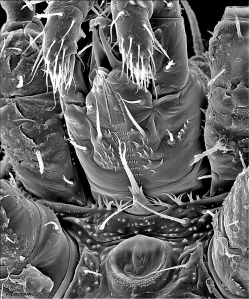
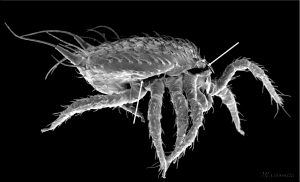
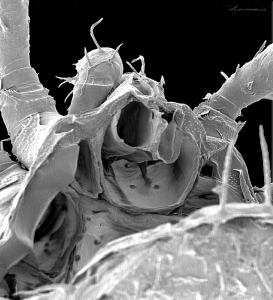
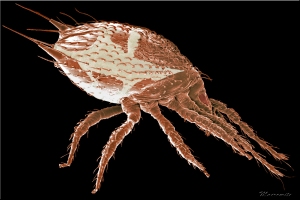
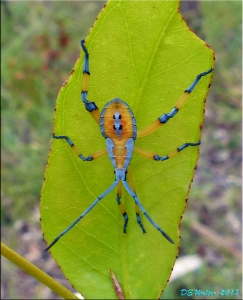
May 2, 2015 at 4:35 am |
[…] The “Macromite” blog is back! Here’s a neat post and this can be filed under “more reasons why mites are odd”: Mesostigmata mites moult forwards! […]
May 2, 2015 at 5:56 pm |
Coreitarsonemus mites “eating” the stink glands of coreid bugs – where did that assumption come from? These mites undergo their life history in those glands, so as presumed good parasites, why would they destroy the glands in which they live and are protected?
Some really cool molecular studies might determine what they feed on. However, my preliminary guess (from morphology of their cheliceral stylets) is that they feed on the bugs’ haemolymph by way of piercing the stink gland walls (much like tracheal mites do, via the tracheal system in honey bees). Another option may be to enjoy the soup (exudate) produced by the bug’s stink gland, but the mites wouldn’t need such strongly produced stylets for that kind of intake.
Nice to see you back, but please latch onto a decent compound microscope to pick back up on new observations/studies!
May 2, 2015 at 8:08 pm |
I was writing metaphorically, but I suppose one could measure the thickness of the gland walls and compare it to the length of the stylets. Presumably, secretory cells line the glands and would need to be pierced to get at the haemolymph, so they may actually ‘eat’ the glands. Not all parasites are properly prudent when partaking of their hosts.
I just spent my life savings on a house and a hectare, so no microscope in the near future, but it would be nice to set up on the deck and enjoy the garden and its wildlife while working. At the moment both Striped and Spotted Marsh Frogs are croaking away in the dam and a Pied Cormorant is hunting yabbies. The drone of Sunday lawnmowers is in the distance. I suppose I will have to take mine for a ride later this week.